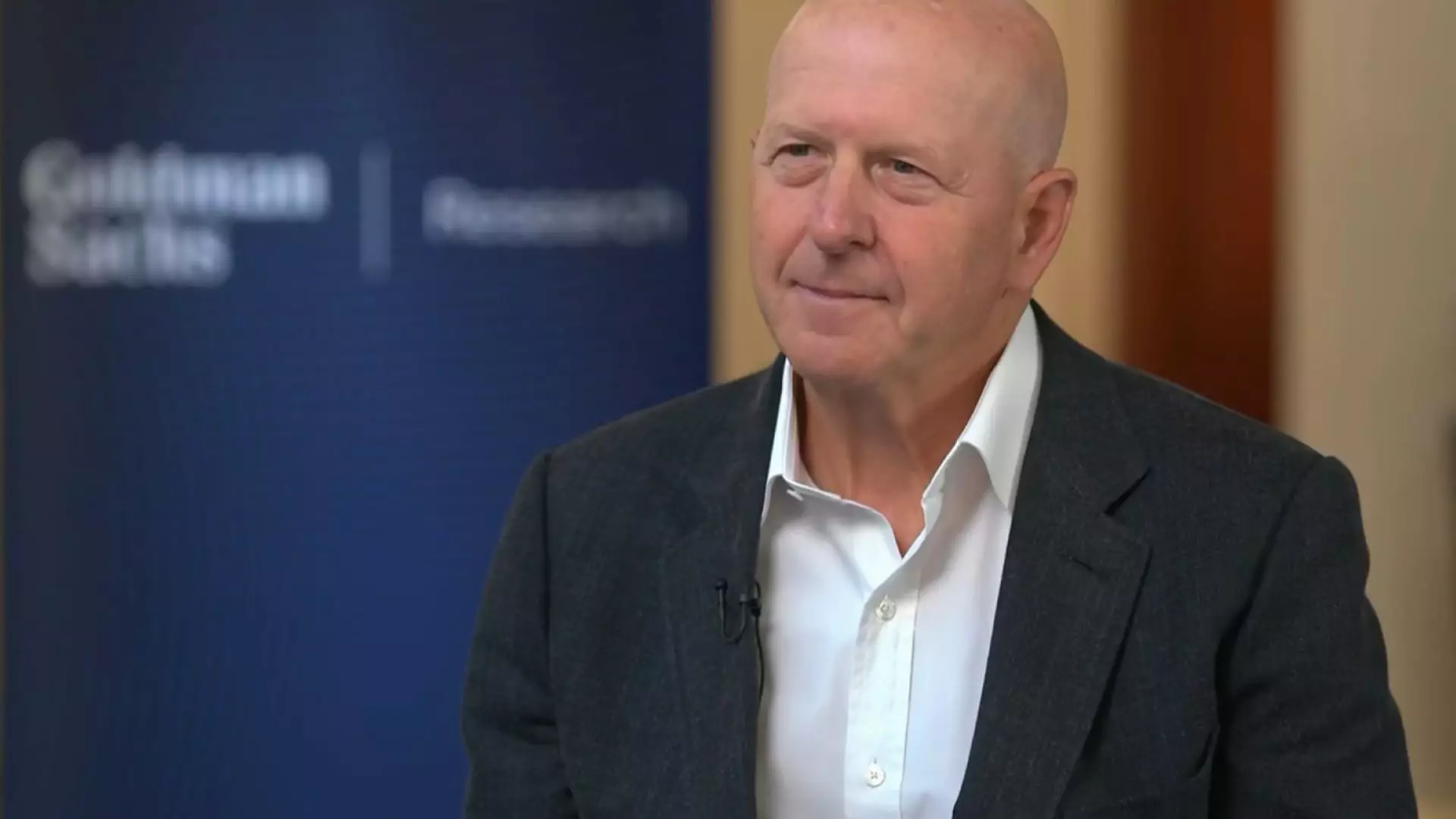In a surprising display of resilience, Goldman Sachs recently revealed first-quarter earnings that eclipsed analysts’ predictions with remarkable efficiency. The bank’s earnings reached an impressive $14.12 per share, significantly surpassing the expected $12.35. Simultaneously, the total revenue soared to $15.06 billion, comfortably outstripping the anticipated $14.81 billion. This financial solidification highlights an intricate interplay between high-stakes trading activities and a generally unstable market climate.
Goldman’s profit jumped by 15% compared to the same quarter last year, amounting to $4.74 billion. While revenue saw a more tempered rise of 6%, the underlying strength in trading operations offers a powerful narrative of adaptation and strategic foresight. The current economic landscape, peppered with uncertainty due to fluctuating political dynamics, presents both challenges and opportunities for major financial institutions.
Equities Trading: The Silver Lining
A particularly striking aspect of Goldman’s report is its global banking and markets division, which experienced a robust 10% revenue increase, totaling $10.71 billion. Notably, equities trading led this surge with a staggering 27% jump, amassing $4.19 billion. This figure overshadowed projections by approximately $540 million, showcasing the bank’s ability to exploit volatility for substantial gains. In stark contrast, the bank’s fixed income division scraped together a mere 2% increase to reach $4.4 billion, falling short of the expected $4.56 billion. This suggests that while Goldman attains success within equities, it still grapples with challenges in other areas.
Interestingly, the firm’s investment banking fees dipped by 8% to $1.91 billion, attributed chiefly to a decline in advisory services. This slump presents a noteworthy contrast to the equitability demonstrated in trading. Are we witnessing a race towards trading supremacy as the main avenue for revenue generation in a shifting economic paradigm?
External Pressures and Internal Poise
The tumultuous atmosphere sparked by former President Donald Trump’s trade policies inevitably looms large over corporate performance. CEO David Solomon candidly expressed concerns about the new operational landscape in his remarks following the earnings announcement. “We remain confident in our ability to continue to support our clients,” Solomon stated, indicating a determination to navigate through the fog of uncertainty.
However, it raises questions: Is confidence sufficient when external pressures mount from aggressive trade negotiations? The market’s responsiveness yields high volatility, thus directly affecting investor sentiment and corporate decision-making. Goldman’s trial in the equity to fixed-income ratio indicates a shifting reality in finance; it appears that banks must pivot toward more adaptive strategies to thrive.
The Broader Financial Landscape
As uncertainty engulfs the economic environment, other major financial players like JPMorgan Chase and Morgan Stanley have also reported impressive first-quarter results that reflect a dramatic rise in equities trading—48% and 45% respectively. Clearly, the vacuum created by trade tensions and market unpredictability is being filled by enterprising trading strategies. While Goldman’s strength in trading is an optimistic take amid a backdrop of declines in other areas, it’s crucial to remain aware of how sustained volatility could affect these gains over time.
Ultimately, the question lingers: Are we at a turning point in finance where traditional income channels become secondary to dynamic trading capabilities? If this trend persists, firms may increasingly emphasize adaptability over predictability, thus significantly reshaping the banking landscape.
Goldman’s ability to report a growth trajectory amidst adversity suggests a significant skill in leveraging market behaviors—necessitating a closer examination of the wealth management strategies in place. As trading revenue casts a favorable light on an otherwise mixed performance, stakeholders eagerly await more in-depth insights from Goldman’s leadership to suss out future risks and rewards in this evolving economic arena.

